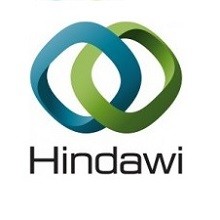
گزارشی در مورد درمان ضد رتروویروسی در بیمار مبتلا به HIV-1
1- Introduction
2- Case Presentation
3- Discussion
4- Conclusions
References
Introduction
Hepatitis B virus (HBV), hepatitis C virus (HCV), and human immunodeficiency virus (HIV) are common viral infections that share routes of transmission through unprotected sex and exchanging needles/syringes. HBV and HCV coinfections are widespread among HIV-infected patients worldwide, which cause long-term illness to chronic hepatitis and death. Viral hepatitis progresses faster in HIV-infected patients compared to those without HIV. Although the antiretroviral therapy (ART) extended the life expectancy of people with HIV, viral hepatitis associated with HBV and HCV becomes the primary cause of morbidity and mortality. As documented, 36.7 million people are living with HIV/AIDS, and 1 million died of HIV-related illness worldwide in 2016. Among them, 3.5 million people are covered by Southeast Asia [1]. In Nepal, 30,646 people are HIV positive, and common risk groups were client of sex workers (34.1%), IDU (10.5%), migrant workers (9.3%), spouse migrants (6.3%), sex workers (4.9%), men having sex with men (1.8%), blood/blood products (0.4%), and others (32.8%) [2]. *e estimated global prevalence of people living with chronic HBV and HCV infection was 240 and 184 million, respectively [3, 4]. *e burden and clinical severity of HBV/HCV coinfection in HIV-infected people are rare but require continued follow-up with frequent testing of serum markers as well as molecular detection and quantification of viral nucleic acids with careful observation. *e molecular testing of HBV and HCV coinfections in a key population of HIV patients is convincing to estimate the true prevalence that provides accurate and justifiable data. However, the data of HBV/HCV coinfection in Nepalese population are infrequently recognized, uneven quality, uncategorized, scattered, and rarely reported. In this case report, we present a rare case of HBV and HCV coinfections in an HIV-1-infected patient with an improved CD4+ count but detectable viral loads after ART. Such triple coinfections in the patient from developing countries like Nepal provide an opportunity to access the effects of viral hepatitis coinfection on immediate and longstanding outcomes after antiretroviral therapy. Also, coinfection could be an exciting model for viral interaction studies and their clearance in response to immune cells.
